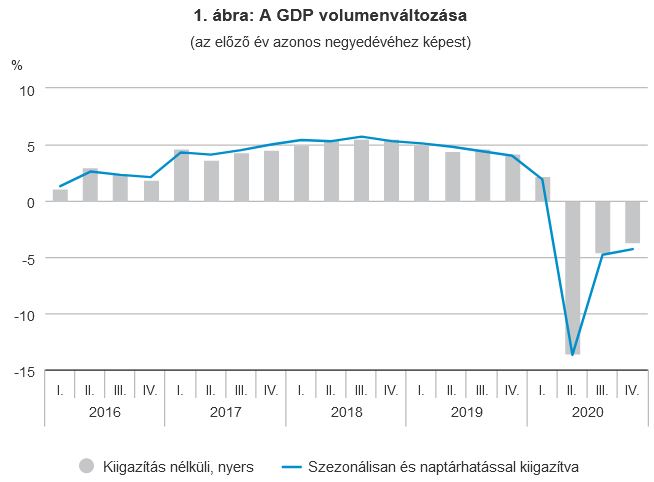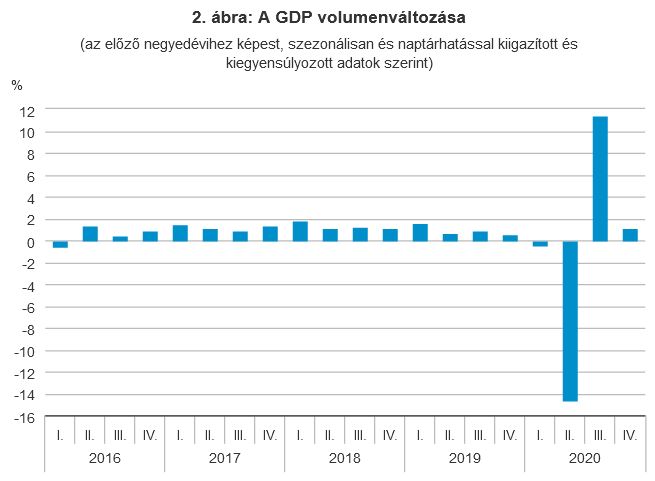2020 Hungarian GDP revealed: damage caused by coronavirus
EnglishThe Hungarian economy as a whole shrank by 5.1 percent in 2020, less than expected. Due to the pandemic, economic performance was mostly set back by the service sector, while it was heated by the recovery in industrial production. This year, economic growth could be close to 5 percent thanks to rising investment and household consumption. However, it may still take the economy nearly a year and a half to reach pre-coronavirus levels.
Owing to economic and job protection measures, the economic downturn was smaller last year than previously thought. According to seasonally adjusted data, in 2020 the Hungarian GDP contracted by 4.3 percent in Q4 and by 5.1 in the whole year.
GDP as compared to the same quarter of the previous year

Unadjusted raw data, Seasonally and calendar-adjusted data Source: Central Statistical Office
During the second wave of the pandemic, the resilience of the economy is demonstrated by the fact that the GDP in Q4 was already 1.1 percent up from Q3, which is definitely a positive surprise.
Table 2: GDP as compared to the previous quarter (seasonally and calendar-adjusted balanced data)

Source: Central Statistical Office
It was the service sector that pulled back economic performance the most last year. Within the service sector, tourism and hospitality were hit the hardest by the epidemic, but all sectors involving personal services had to face considerable difficulties.
In contrast, Hungarian industry showed resilience and has now been expanding on an annual basis since September, thus industrial performance made a positive contribution to the economic output in Q4.
International developments were more favourable than expected, which, along with the relative smoothness of supply chains helped the recovery of the export sector.
Future prospects
This year, Hungary’s economy may expand by almost 5 percent, the key to which is a ramp-up in investments and an increase in household consumption.
The national investment rate may steadily exceed 25 percent, closing up to 27 percent in the next three years, which will ensure that Hungary grows at least 2 percentage points faster than the EU average.
The expansion of investments is significantly enhanced by dynamic lending. According to the forecast of the Hungarian National Bank, the retail and corporate loan volume may expand by 12 and 8 percent respectively in the coming years.
Household consumption can be enhanced by the reopening of the economy, a high employment rate, an increase in the rate of full-time employment and a continuing rise in real wages.
In addition, the loan moratorium will significantly increase the purchasing power of families. Household saving rates are high; Standard & Poor's reported an increase of 20 percent in Hungarian bank deposits last year. Therefore, consumer spending is likely to get a big boost once the pandemic subsides.
